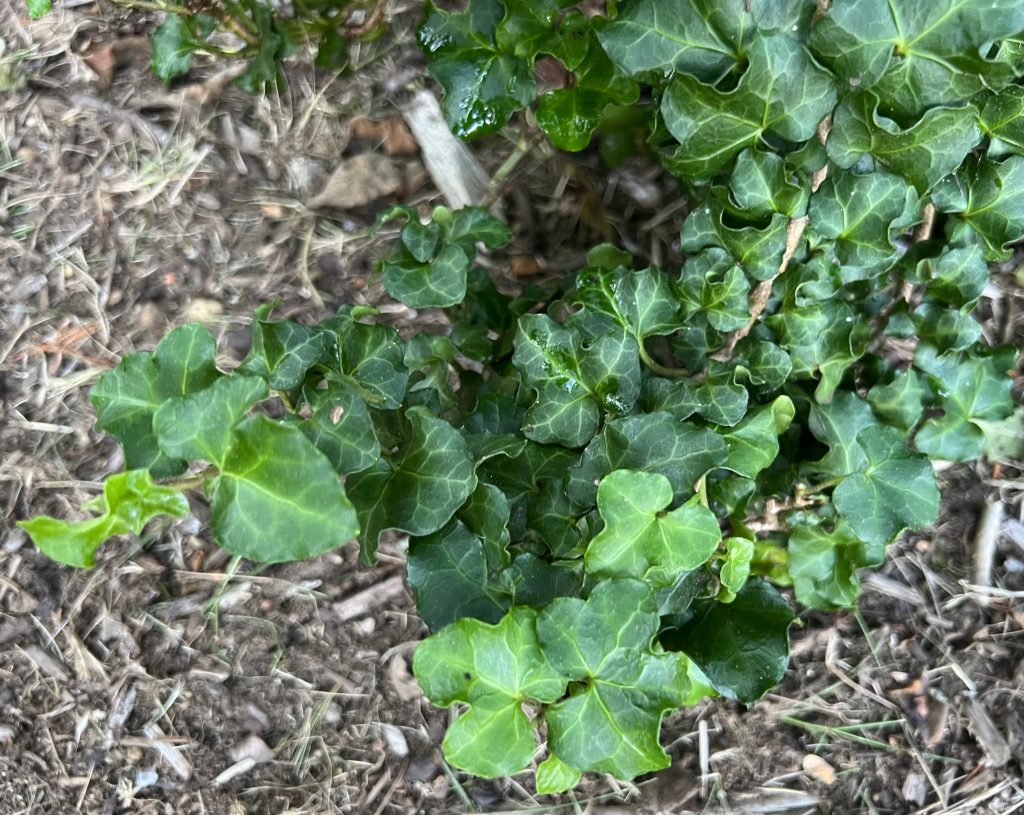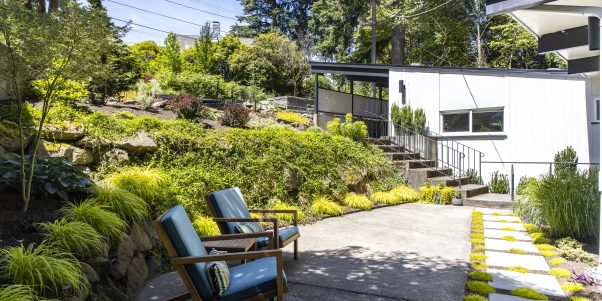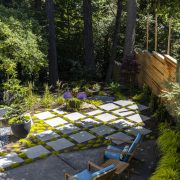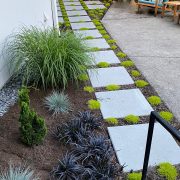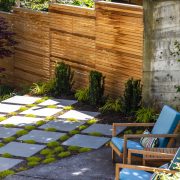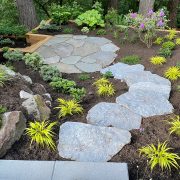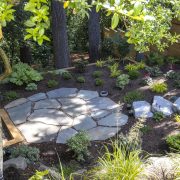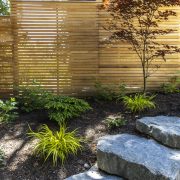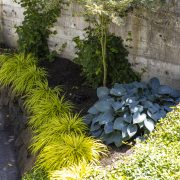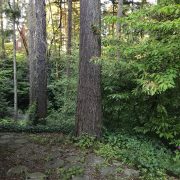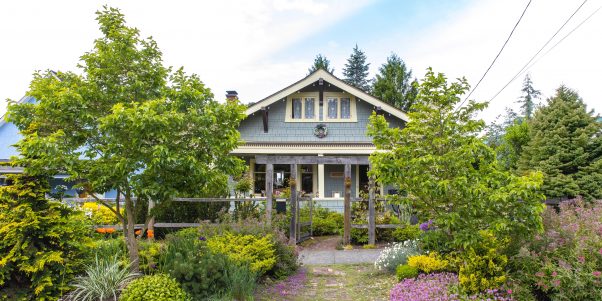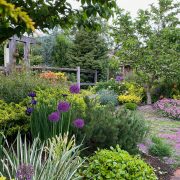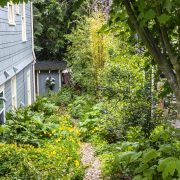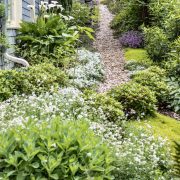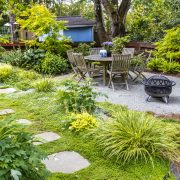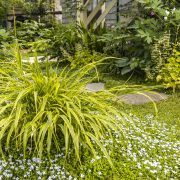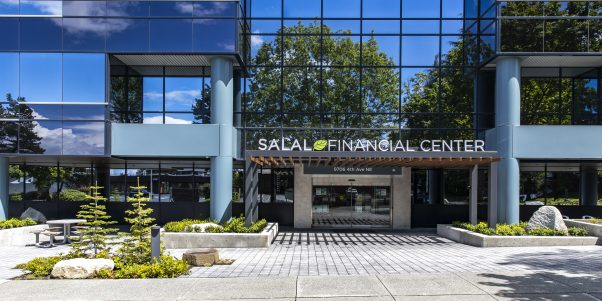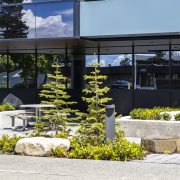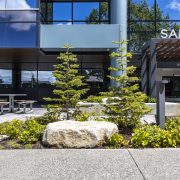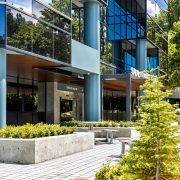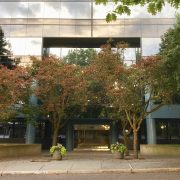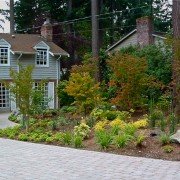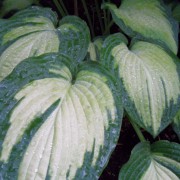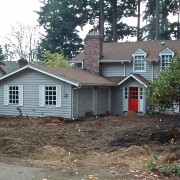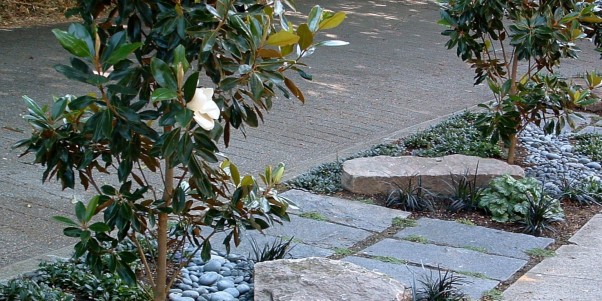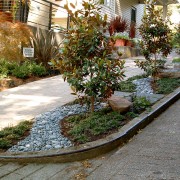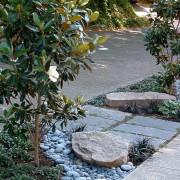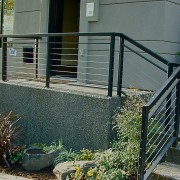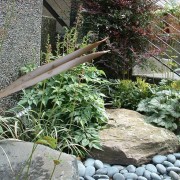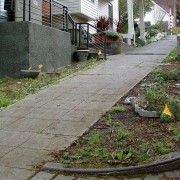If you’re not a fan of ivy, you’re not the only one. When you think of this particular plant you are probably conjuring up images of either English ivy — such as Hedera helix “‘Baltica’,” “‘Pittsburg’,” “‘Wahington’,” “‘Star’” varieties — or Irish ivy (Hedera hibernica). All of these invasive ivies, however, can be found on King County’s list of noxious weeds. English ivy is categorized as a non-regulated Class B and C noxious weed, meaning control is recommended, but not required in King County where it is no longer sold in nurseries.
Some gardeners that have inherited an established mass of this nearly indestructible evergreen carpet, find themselves exasperated with ivy that has taken over flower beds, grown up the trunks of trees, or covered fences and walls. Regular shearing will keep it looking tidy, but that’s not much of a consolation for those who just want it gone.
Good Ivy
Stigma and guilt by association have ruined the reputation of the entire genus of ivy (Hedera). While the ivy you may be thinking of is known for its worst traits, there are, however, some varieties of ivy that can be charming accents when creeping over the edge of a pot or as a fine-textured, ground-hugging evergreen element among other plants. These well-mannered “good” varieties are easy to grow like their invasive cousins, but they don’t take over.
I recommend trying the crinkly dark green leaves of Hedera helix “‘Cristata’” (Parsley Crested Ivy) in pots where it can curl over the rim. The fine-textured “‘Mona Lisa’” variety will add a colorful evergreen mat at the base of a rock or tree in a shade garden. Hedera algeriensis “‘Gloire de Marengo'” (Variegated Algerian Ivy) sports exotic-looking leaves marked with lighter green and white variations. Originally native to central Algeria and Tunisia, where it grows vigorously, Algerian Ivy, also called Canary Island Ivy, grows slowly in the cooler climate of the Maritime Pacific Northwest. It thrives in part sun and needs shelter from wind and freezing temperatures in order to thrive. Like all ivies, it prefers regular water and rich soil.
If you’re looking for more ideas, please contact us for a design consultation to learn more about landscape design and how to maximize the impact of the plant combinations in your garden.
